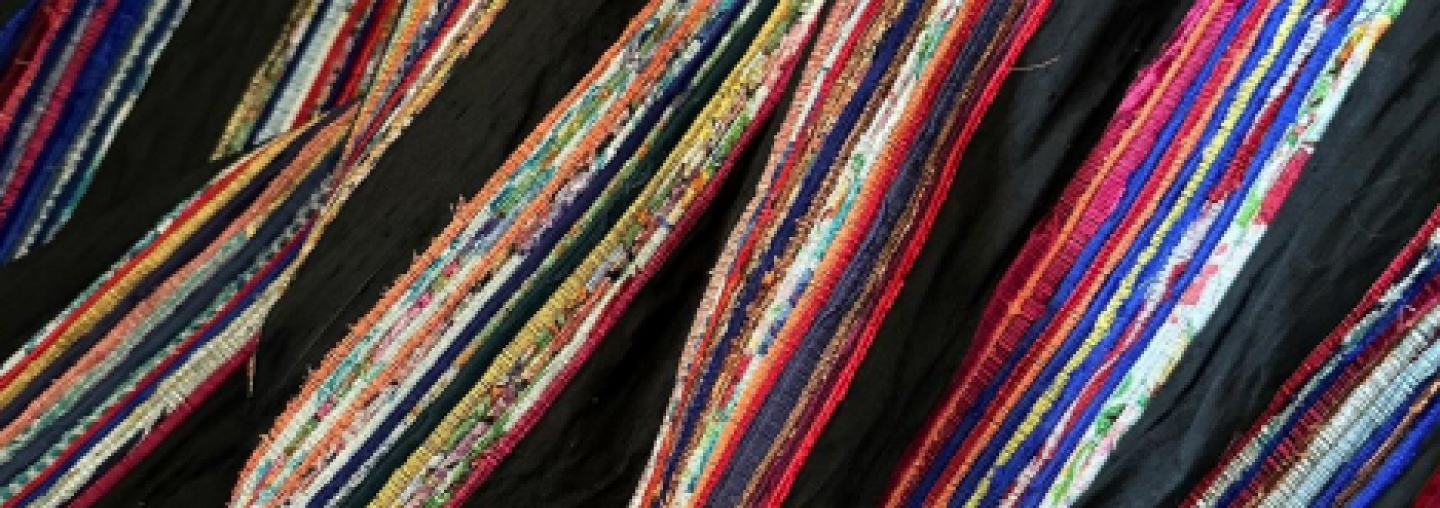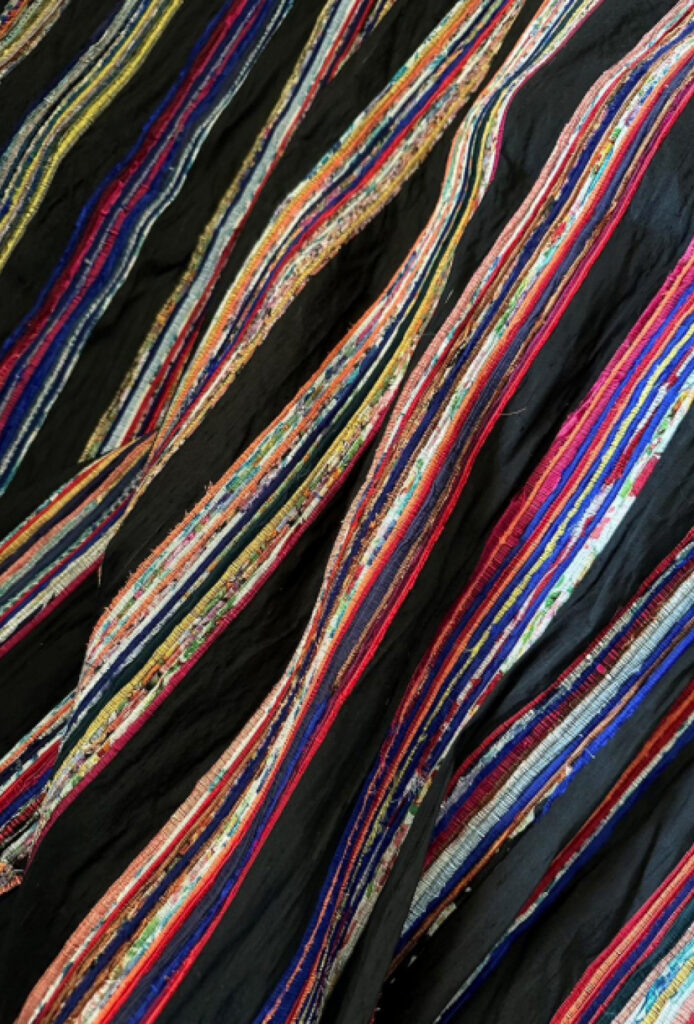
Transgenerational perceptions on fashion sustainability and traditional weaving, from past to present days
Dr. Pathitta Nirunpornputta
Introduction :
The project has focused on how fashion and textiles people from then (2008) and present days (2023) had been taken reactions on the context of fashion sustainability and local cultural heritage skills. The project aims to present personal experiences and thoughts how people who have been part of fashion and textiles industry had shared their perspectives relating to sustainable fashion. The project use practiced-based method, autoethnography gathering with observations.
In the past, back in 2008, when I was still a fashion student, people in fashion and textiles industry, particularly in Thailand, rarely focused on fashion sustainability and had negative perception of using unwanted or trash materials. At the time, the definition of ‘eco-fashion’ or ‘sustainable fashion’ did not have a proper translation from English into Thai. Thai fashion designers considered using unfashion materials on making design garments is unappropriated in fashion design industry, as those materials should only be used as a Do-It-Yourself (DIY), rather than be part of fashion garments. Also, environmental issues should not be part of fashion context as fashion designer was not an environmentalist. Furthermore, I used Thai silk as a main material of the collection, in which at the time, a few fashion students rarely used local cultural material as part of modern fashion design resulting in a negative feedback on using material that refers to unfashion.
Nevertheless, for the past 5 years until the present days (2023), both fashion sustainability and safeguarding cultural heritage textiles have been raised and used as part of fashion and textiles industry. When younger generations started questioning, while older generations
started considering social problems, it seems a right time to change perceptions.
Finally, the project created a piece of handwoven textiles with contexts behind of transgenerational perceptions on fashion sustainability and traditional weaving, in which I used the same technique and materials in 2023. However, it is presented in a different place, and time, and social issues.
Objectives:
1. To reflect my thoughts and opinions through personal experiences
2. To recreate handwoven textiles following my method in 2008, but with different contexts behind the textile piece.

Methodology:
The project presents as a practiced-based project, and using autoethnographic method gathering with observations. Therefore, the project presents as a piece of handwoven textiles using traditional weaving methods, intertwined between traditional silk from Northeastern Thailand and local deadstock fabrics from one factory based in Thailand, in which the same method as used in 2008 created by myself. However, I recreate with different design of making textile for this project.
The idea of using my technique and design to recreate a new textile piece came from how people took reaction on my work in these past 5 years were different from how people had opinions on the same piece of my work. I weaved Thai silk combining with stripped pieces of deadstock fabrics by using local traditional loom. I selected and grouped colours of those stripped pieces of fabrics and designing to weave as a stripe pattern, portraying as TV colour bars with noise signals, which I use them as a symbol of Transgenerational object.
Techniques and Materials:
Textile
The handwoven textile will be put in a frame, therefore, it will be presented on the wall. However, if there is enough space, I would prefer to show as about 2 metre long piece of textile.
Conclusion:
It is a great opportunity to reflect my thoughts while recreating this work project. Reflexivity is a great tool and can be presented in various forms, from writing to making objects. In this project, I conclude that to understand social contexts have always been changing, and how people had been involved, it is essential to understand and observe each generation with open-minded. It took time, from generations to generations, to start changing perception of people in fashion and textiles industry, how fashion people consider in sustainability, and looking at our own root, local cultural heritage skills, as part of modern fashion. In present days (2023), it is matter to listen voices from different generations, and started questioning in how and why they have those opinions. While fashion people who worked in between 70s and 90s, fashion industry was on a high peak era, and only focus on fashion aesthetics. People from newer generations (who was born after 90s) has focused on social contexts along with aesthetics, as there were countless issues they have been through, as well as have been seen through digital media. Therefore, fashion or textiles aesthetics is no longer the only method to create fashion pieces, those design objects should have social contexts behind their design.
References:
– Black, S. (2019). Sustainability and Digitalization. In A. Geczy & V. Karaminas (Eds.). The End of Fashion: Clothing and Dress in the Age of Globalization (pp. 113–132). London: Bloomsbury Visual Arts. Retrieved March 6, 2023, from http://dx.doi.org/10.5040/9781350045071.ch-009
– Fletcher, K. (2013). Sustainable fashion and textiles: design journeys. London ; Sterling, VA, Earthscan.
– Introduction. (2019). In A. Gwilt, A. Payne & E.A. RüThschilling (Eds.). Global Perspectives on Sustainable Fashion (pp. vii–viii). London: Bloomsbury Visual Arts. Retrieved March 6, 2023, from http://www.bloomsburycollections.com/global-perspectives-on-sustainable-fashion/introduction
– Mahrs, M., & Berthem, F. (2022). Sustainable Fashion.: A Generation Z Perspective (Dissertation). Retrieved from http://urn.kb.se/resolve?urn=urn:nbn:se:hj:diva-57151
– Muposhi, A. and Chuchu, T. (2022), “Influencing millennials to embrace sustainable fashion in an emerging market: a modified brand avoidance model perspective”, Journal of Fashion Marketing and Management, Vol. ahead-of-print No. ahead-of-print, pp. 1-21. https://doi.org/10.1108/JFMM-07-2021-0169
– Nirunpornputta, P. (2022) Thesis, An exploration of safeguarding cultural heritage textiles in Thailand: the perspectives from expected and unanticipated preservers courses PhD thesis, Galashiels: Heriot-Watt Univ.